市场资讯及洞察
.jpg)
本周全球市场情绪偏谨慎,投资者关注即将发布的重要经济数据和企业财报,同时也在重新评估对美联储降息的预期。
美国市场
美国股市方面,周一表现出强劲反弹势头,三大指数齐涨。标普500指数上涨约1.1%,道琼斯工业平均指数与纳斯达克综合指数分别上涨1.1%与1.4%,凸显科技股与大型蓝筹股的带动作用。科技板块中,苹果因 iPhone 销售表现强劲上涨近4%,而英伟达则凭借其新一代芯片发布受到关注,提振整体科技板块人气。
与此同时,10 年期美债收益率上升至 4.68%,为近两周新高,显示投资者在经济数据与通胀预期交织下重新评估美联储的政策路径。收益率走高提振美元表现,并强化其避险吸引力,推动美元指数重回106上方。受此影响,商品货币普遍承压,澳元与纽元兑美元均小幅下挫。
投资者对于即将发布的财报季保持关注。与此同时,美国与中国贸易关系出现缓和迹象,带动市场情绪回暖,但部分投资者担忧政策不确定性仍存,或在短期内引发波动。总体而言,美股反弹体现出资金对科技板块的信心,但在高利率与强美元环境下,市场仍处于谨慎乐观的阶段。
澳大利亚市场
澳大利亚股市 ASX200 指数下跌 0.8%,铁矿石价格回落至 106 美元 / 吨,必和必拓(BHP)和力拓(RIO)等矿业股对大盘构成拖累。澳大利亚统计局(ABS)数据显示,9 月份失业率升至 4.5%,为 2021 年 11 月以来最高水平,表明劳动力市场有所放缓。这一数据使得市场对澳大利亚储备银行(RBA)未来降息的预期升温。澳元兑美元汇率一度短暂反弹,但随后受到美元强势的限制,目前在 0.652 附近交易。
数字货币市场
数字货币市场延续震荡走势。本月 10 日,由于地缘政治与中美贸易紧张情绪回升,数字货币市场出现剧烈波动。全球最大数字货币比特币日内跌幅超过10%,全球总市值缩水约 190 亿美元(约合人民币 2400 亿元),比特币短线跌破10.6万美元关口,以太坊亦失守3800美元一线。
随后,随着投资者逢低买入及部分机构资金回流,市值有所回升,重新回涨至11万美元。市场普遍认为,在宏观经济不确定性与监管风险并存的背景下,数字资产短期内仍难以摆脱高波动特征。投资者可关注美国 SEC 对数字货币 ETF 审批进展,以及美债收益率变化对市场资金流向的影响。整体而言,市场情绪依然偏谨慎,投资者应保持理性并密切关注宏观经济与政策变化。
大宗商品市场
大宗商品方面,避险需求推动贵金属价格走高。近期黄金价格成为市场关注焦点,一度突破两个月新高,达到每盎司 4381 美元,避险买盘明显增加。这反映出市场对地缘政治风险与全球经济放缓的担忧加深。现货黄金价格突破4100美元/千克关口后虽略有回落,但仍处于强势区间,资金持续流入黄金ETF产品,显示避险情绪仍然高涨。
白银走势同步跟随黄金上涨,受工业与避险双重属性支撑,涨幅略优于黄金。原油价格较月初高点明显回落,主要受库存回升和需求疲软影响。短期内油价或维持区间震荡格局。若美国后续公布的通胀与就业数据继续走弱,黄金有望延续上行趋势;但若美债收益率再度攀升,金价短线或面临技术性调整压力。
总结
总体来看,全球市场情绪转趋谨慎,投资者在等待关键经济数据与企业财报结果之际,避险情绪上升。美元的持续强势与美债收益率的上升,对新兴市场与商品货币构成一定压力。与此同时,避险情绪推动黄金与白银走强,显示市场对宏观与地缘风险的防御需求仍在。油价回调则反映出市场对经济增长放缓的担忧。随着本周欧美多项经济数据及主要科技企业财报即将公布,市场波动或将加剧。投资者普遍关注美联储官员的最新言论,以判断降息周期启动时点。整体而言,短期市场走势将受到经济数据、收益率变化及政策预期的共同影响。在当前环境下,资产配置策略宜保持灵活,防御性与成长型板块可适度平衡,以应对潜在的不确定性与市场波动风险。
免责声明:GO Markets 分析师或外部发言人提供的信息基于其独立分析或个人经验。所表达的观点或交易风格仅代表其个人;并不代表 GO Markets 的观点或立场。
联系方式:
墨尔本 03 8658 0603
悉尼 02 9188 0418
中国地区(中文) 400 120 8537中国地区(英文) +248 4 671 903
作者:
Alena Wang | GO Markets 墨尔本中文部
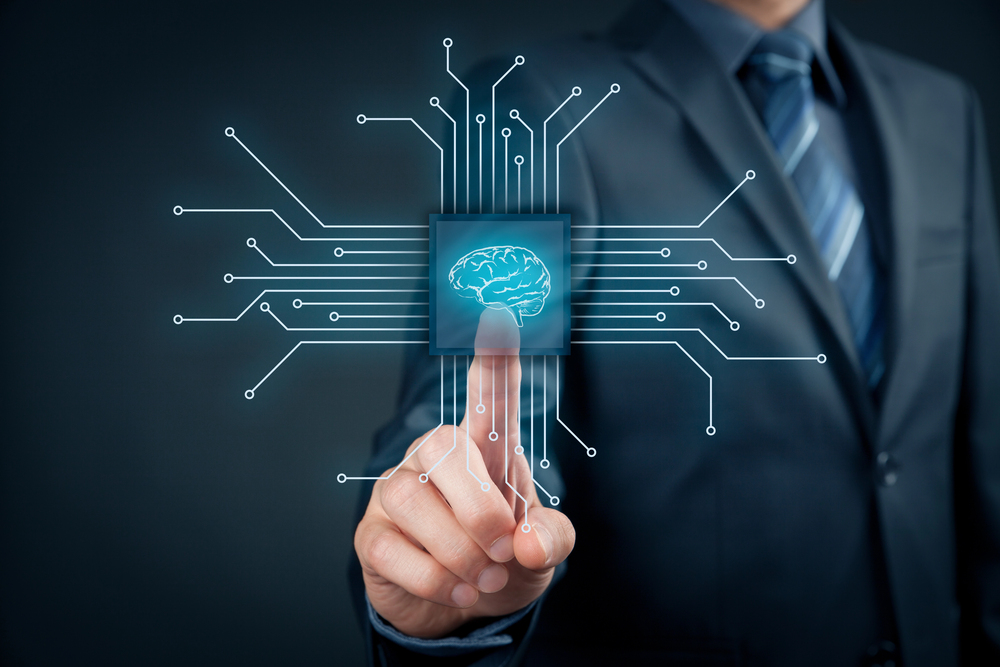

The financial markets are evolving rapidly, driven by increased data availability, computational advancements, and sophisticated trading strategies. Traders—both institutional and retail—are turning to artificial intelligence (AI) and, more specifically, Machine Learning (ML) to gain an edge in the markets. At its core, Machine Learning is a subset of AI that enables systems to learn from data and make predictions or decisions without being explicitly programmed.
This is a fundamental shift from traditional rule-based trading systems, which rely on static conditions and predefined rules. Instead, ML-powered strategies can adapt, refine, and improve their decision-making process over time, allowing traders to respond more dynamically to ever-changing market conditions. In this article we attempt to unravel not only what ML is but why is ML is likely to become such a dominant force in trading, how you might get ML to work for you, AND even if you are likely to sit on the sidelines what it all may mean for discretionary traders and how it could change the way process move.
Why Now? The Perfect Storm for ML Adoption Several key developments in technology and financial markets have contributed to the widespread adoption of machine learning in trading. I have identified the primary four factors which include: Explosion of Market Data Financial markets generate enormous amounts of data every second, including price movements, order book data, trading volumes, macroeconomic reports, earnings releases, news articles, and even sentiment indicators from social media.
Historically, traders have relied upon basic statistical models or simple technical indicators to analyse this data. However, with ML, traders can now process and extract insights from vast amounts of structured and unstructured data far beyond human capabilities. For example, natural language processing (NLP), a branch of AI, can scan financial news sources, social media platforms like Twitter, and earnings call transcripts in real time to gauge market sentiment.
This allows traders to make more data-driven decisions, predicting how a specific news event might impact stock prices before traditional market participants react. Advancements in Computing Power The ability to leverage ML in trading was once limited by hardware constraints. However, the rise of cloud computing, GPU (graphics processing units) – which may be better than CPUs for acceleration of data pattern matching, and quantum computing research has dramatically increased the speed and efficiency of processing large datasets.
In practical terms, this means that ML models can be trained and executed in real-time, allowing traders (or trading algos) to make split-second decisions based on rapidly evolving market conditions. For instance, hedge funds and proprietary trading firms now run ML-driven models that execute high-frequency trades (HFT) at lightning-fast speeds. These models can analyse thousands of data points within milliseconds to determine the most optimal trade execution strategy.
Algorithmic Trading Dominance Institutional trading desks and hedge funds increasingly depend on sophisticated algorithms to identify patterns, predict price movements, and execute trades with precision. Machine learning adds an additional layer of intelligence, allowing these strategies to evolve and optimize continuously. For example, ML-powered quantitative trading strategies can adjust trading parameters dynamically, responding to shifts in volatility, changes in liquidity conditions, or sudden macroeconomic shocks (such as Federal Reserve rate decisions).
This gives firms a huge competitive advantage over traders using fixed-rule systems. Retail Trader Accessibility This is where it may become more relevant to you or I in a trading context! Machine learning is no longer limited to large institutions with deep pockets.
AI-powered tools and trading platforms are making ML-driven strategies more accessible to retail traders. Many brokers and third-party developers now offer plug-and-play ML models that traders can integrate into their trading systems, even without a deep understanding of coding or data science. For instance, platforms like MetaTrader 5, along with the help of those who know programming language, allow traders to build and test ML-based strategies, This democratisation of technology ensures that even independent traders and not just the big players can begin to utilise the leverage in decision making associated with AI-driven system development potential.
How is Machine Learning Used in Trading? Having covered why ML is a NOW issue in trading, let's explore in more detail how it can be used in trading so you can begin to understand its full potential. Machine learning is transforming trading strategies in several significant ways, enabling traders to gain insights, optimise trade execution, and react more dynamically to market movements and changes in sentiment.
Identifying Patterns That Humans Might Miss One of the most valuable aspects of machine learning is its ability to detect hidden patterns and relationships that may not be immediately obvious to human traders and traditional forms of technical analysis and standard indicators. Some key applications include: Detecting correlations between price, volume, sentiment, and macroeconomic indicators that are too complex for traditional analysis. Recognizing trading patterns such as mean reversion, momentum shifts, and breakout signals.
Using sentiment analysis on financial news, social media, and earnings reports to anticipate potential price movements. To give a potential example, an ML model can analyse Bitcoin price action, news sentiment, and trading volume to determine whether a sudden spike in tweets mentioning Bitcoin is more likely to trigger a short-term rally or a market dump. Optimising Trading Strategies for Higher Accuracy Machine learning doesn’t just help traders recognise patterns—it actively refines and optimizes trading strategies by learning from past market conditions and improving decision-making processes.
Reducing False Signals: ML models apply probability techniques in an attempt to limit the occurrence of false positives. This is particularly useful for traders whose strategies may struggle with whipsaws in volatile markets. Refining Trade Entry and Exit Points: Instead of rigid rules, ML systems dynamically adjust trade timing based on changing volatility, volume, and market sentiment.
Automating Risk Management: ML-powered risk models optimize stop-loss levels and position sizing based on the current market environment (and the likelihood that this may change) For example, a forex trader might use an ML system that widens stop-losses during high-volatility events like FOMC rate decisions and tightens them when price action is stable. Adapting to Changing Market Conditions Unlike traditional strategies, ML models dynamically adjust parameters in response to market shifts. Regime Detection: ML identifies when markets switch from trending to ranging, adjusting trading strategies accordingly.
Adaptive Position Sizing: Models automatically increase or decrease trade size based on real-time risk assessments. Feature Selection: ML continuously selects the most relevant technical indicators based on current market behaviour. For instance, an ML-driven strategy might rely on moving averages during a trend, but switch to RSI and Bollinger Bands when markets consolidate.
How Machine Learning Works in applying trading – A process model Machine learning follows a structured four-stage process when applied to trading. This process ensures that trading models are built, refined, and continuously improved to enhance the chances of profitability and appropriate adaptability. Should you dive into the world of ML this would provide an appropriate framework for you to follow.
Let’s break down each stage with examples of how traders and institutions can, and do, apply these concepts in real-world markets. Recognising Patterns – Collecting and Analysing Market Data The foundation of any machine learning model is data collection. Without accurate and comprehensive data, ML models cannot learn effectively.
In trading, this involves gathering historical and real-time market data, such as: Price action (open, high, low, close, and volume) Order book data (bids, asks, and execution flow) Macroeconomic indicators (inflation rates, GDP data, central bank decisions) News and sentiment analysis (financial news articles, earnings reports, and social media sentiment) Let’s give an example to help clarify how this could work. A hedge fund using ML might aggregate 10 years of historical price data from multiple asset classes (stocks, forex, crypto, commodities) along with real-time social media sentiment data from Twitter and Reddit. The model scans for correlations between news sentiment and asset price movements, allowing it to predict how a stock may react to a particular news headline before the broader market does.
Using Additional Factors – Feature Selection and Confluence Indicators Once raw data is collected, the next step is to identify the most relevant factors (also called features) that contribute to successful trading decisions. Feature selection helps filter out unnecessary noise and focus on variables that strongly influence price action. ML models use statistical techniques to evaluate which features matter most, including: Standard Technical indicators: Moving Averages, RSI, Bollinger Bands, MACD, etc.
Order flow dynamics: Imbalance between buyers and sellers at key price levels. Volatility measures: ATR (Average True Range) and historical volatility. Sentiment indicators: Word frequency analysis from news articles.
Again, here is an example to help illustrate this approach. Suppose a trader is building an ML model to predict breakout trades in the S&P 500 index. Initially, the model considers 100 different features, including volume, volatility, RSI divergence, Bollinger Bands, earnings reports, and Federal Reserve announcements.
After running a feature selection process, the model identifies that only five key factors have predictive power—for instance, breakouts are most reliable when combined with a sudden surge in trading volume, an increase in open interest, and a bullish sentiment score from recent news headlines. By narrowing down the list of variables, the ML system focuses only on high-probability signals, reducing false positives and improving accuracy. Testing and Adjusting Probabilities – Training the Model Once relevant features are identified, the next step is to train the ML model.
Training involves feeding historical data into the model, allowing it to learn how different market conditions impact trade outcomes. This phase involves: Backtesting: Running the model on past data to see how well it would have performed historically. Cross-validation: Splitting data into multiple sets to prevent overfitting (where the model memorizes past data instead of generalizing patterns).
Probability adjustments: Refining the model by increasing the weight of more reliable signals and reducing the impact of weaker ones. As an example, a forex trader using ML wants to develop a model that predicts trend reversals in EUR/USD. Initially, the model has an accuracy of 55%, which is slightly better than random chance.
However, after adjusting the model’s probability weighting, the trader discovers that reversal trades are significantly more reliable when price is near a key Fibonacci retracement level AND volatility is low. After refining these inputs, the model’s accuracy improves to 68%, making it a potentially more viable trading tool. This stage is crucial because many ML models fail when they are over-optimized for past data but don’t perform well in real-time markets.
The goal is to find patterns that repeat across different time periods and market conditions. One of the challenges of this of course is to determine what constitutes a reasonable amount of past data and how this differs depending on the timeframe under investigation. Programming and Evaluating Results – Testing in Live Markets Once an ML model has been trained and optimized, the final step is deploying it in real-time trading.
This process involves simulated (demo) trading, forward-testing, and continuous performance monitoring. At this stage, traders must ensure: The model performs well in real-time data streams, not just historical backtesting. It adapts to changing market conditions rather than being reliant on past patterns.
Risk management is incorporated so that even if predictions fail, drawdowns remain controlled. AND is consistently monitored to quickly identify and potential intervene on changing performance. For example, a hedge fund may develop an ML model to trade Bitcoin breakout patterns.
In backtests, the model had a 72% win rate. However, once deployed in live markets, it struggles due to sudden changes in Bitcoin’s liquidity conditions and large institutional order flows. To fix this, the fund integrates real-time order book analysis, allowing the model to detect large buy/sell orders from major players.
After this adjustment, the model stabilizes and achieves consistent profitability in live trading. Many traders assume that once an ML model is built, it will work indefinitely. Just to reinforce the need for consistent monitoring, remember markets are constantly evolving.
The most successful machine learning models are those that are continuously monitored, retrained, and optimised based on the impact of new data on previously developed systems. What Machine Learning may mean for market price action for all traders. The growing influence of machine learning in trading is reshaping how markets behave.
Whether choosing to be an active participant or simply a discretionary trader it is essential to give some thinking about how market prices, and the movement of such could be impacted through a proliferation of ML driven strategies and automated models. Here are FOUR key ways ML may already be altering price action dynamics: Smoother Trends with Fewer Pullbacks Historically, market trends have often experienced frequent retracements, with price pulling back before resuming its primary direction. However, as ML-powered trading models become more dominant, trends are becoming smoother and more sustained.
This is because ML-driven trend-following strategies can identify high-probability trend continuations and execute trades that reinforce directional movement. For example, large hedge funds using ML-driven strategies may enter scaling positions, gradually increasing exposure instead of making single large trades. This reduces erratic price movements and contributes to more gradual, extended trends.
Faster Breakouts & Fewer False Signals One of the biggest frustrations for traders is entering a breakout trade, only for price to quickly reverse—a phenomenon known as a false breakout or "fakeout." Machine learning is improving breakout trading strategies by identifying breakout strength indicators, such as volume surges, volatility expansions, and order flow imbalances. For instance, ML models analysing Bitcoin price action may detect that breakouts with a 30% increase in trading volume have a significantly higher chance of success compared to breakouts without volume confirmation. As a result, traders using ML-based breakout models filter out weak breakouts and focus only on those with strong supporting evidence.
Increased Stop-Loss Hunting & Engineered Liquidity Grabs As ML-powered algorithms become more sophisticated, they are increasingly able to predict where retail traders and traditional algorithmic strategies place stop-loss orders. This has led to a rise in engineered liquidity grabs, where price briefly spikes below key support levels (or above resistance levels) to trigger stop-loss orders before reversing in the intended direction. For example, an ML-driven institutional trading desk might analyse order book data and recognize that a high concentration of stop-loss orders sits just below a key support level.
The algorithm may execute a series of aggressive sell orders to trigger those stops, temporarily pushing the price lower. Once the stop losses are triggered, the algorithm quickly reverses its position and buys back at a lower price, capitalising on the forced liquidation of retail traders. More Algorithmic Whipsaws in Low-Liquidity Zones As ML-powered trading strategies become more widespread, low-liquidity markets are experiencing an increase in whipsaws and rapid price reversals.
This is because ML algorithms are constantly competing with one another, leading to aggressive, short-term volatility spikes when multiple models react to the same data simultaneously. For example, in markets with thin liquidity—such as exotic forex pairs or small-cap stocks—ML-driven strategies might detect an inefficiency and rush to exploit it. However, because multiple trading models recognize the same opportunity at the same time, prices can experience violent, rapid movements as algorithms aggressively adjust their positions.
This has made it increasingly challenging for manual traders to navigate low-liquidity environments without getting stopped out by unexpected reversals. Final Thoughts: Machine Learning as a Continuous Process There are two key takeaways I want you to get from this article. Firstly, machine learning is here to stay and is only likely to proliferate further impacting on strategy developed but at the CORE of trading – will impact on the traditional way we see asset prices move.
Even if not an active part of ML in how you decide to trade you need to keep abreast of what is happening in this world and the potential changes to traditional technical analysis techniques that may necessitate a review of how YOU trade now. Secondly, machine learning in trading is not a “set-it-and-forget-it” system. Rather, it is a continuous learning process where models must be refined, adapted, and improved based on real-time data and evolving market conditions.
Those who do embrace this are likely to fall very short of its potential. There are NO SHORT CUTS in the process described nor in the need for continuous and thorough performance measurement and evaluation. Traders and institutions that effectively integrate ML into their strategies gain a significant edge by leveraging data-driven decision-making, automation, and adaptive learning.
While ML does not guarantee success, it reduces human bias, improves accuracy, and enhances trading efficiency, making it one of the most powerful tools for modern market participants.
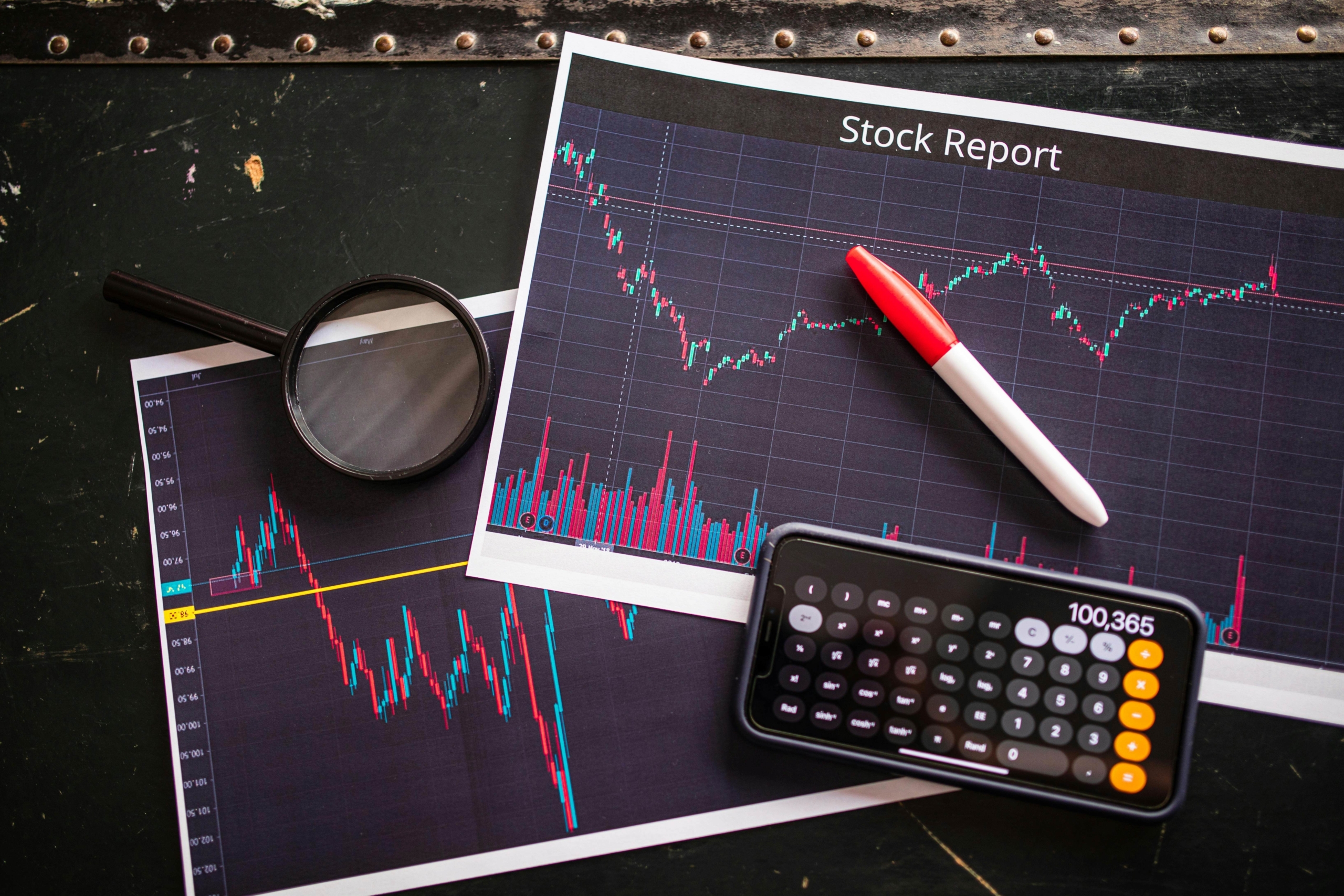

热门话题
上周美股强势上涨,扭转了美国金融数据的压制。CPI和PPI均高于预期,但鲍威尔国会山表态最终以服软特朗普收尾,美联储考虑降息以配合关税政策组建经济强化组合拳。本周没有重大金融数据影响市场,财报方面也没有股指高权重企业冲击。澳大利亚本周二有望迎来加息以来首次降息,不过预期澳联储也仅仅降息25个基点,而新西兰则有望降息50个基点。周四美股三大股指震荡不大,纳指强势上冲,AI应用成为关键因素。近期AI应用持续火爆,AI医疗股节节高升,进一步兑现今年AI基础转向AI应用的预期。核电板块则分化明显,电力供应的缺口持续存在,CEG和VST保持缓慢稳步上行,继续适合长期持有,核技术股普遍回调,铀矿股因国际铀价破位下跌而持续走低。量子计算概念周五表现也不尽人意。无人机和机器人概念周五均跌多涨少。今天美股休市,且看衍生品市场表现。

今日A股港股大幅上涨,因Deepseek引发的产业效率提升预计使得外资涌入亚洲市场,AI ASIA进一步发酵,China50和HK50持续大涨。美元指数持续回落至107下方,金价周五也大幅走低回到2880平台,恐慌变动不大,油价继续继续看空,美油周五扩大跌幅,但依然保持在70美元以上,随着特朗普和俄罗斯当局谈判深入,俄罗斯有望进一步释放超亿桶原油,美油价格很快将回到70以下。外汇方面澳元周五走强,澳美回到0.635,美日随着美元回落而走低,中期有望回到150下方。美元人民币也回到了7.25平台。免责声明:GO Markets 分析师或外部发言人提供的信息基于其独立分析或个人经验。所表达的观点或交易风格仅代表其个人;并不代表 GO Markets 的观点或立场。联系方式:墨尔本 03 8658 0603悉尼 02 9188 0418中国地区(中文) 400 120 8537中国地区(英文) +248 4 671 903作者:Xavier Zhang | GO Markets 高级分析师


热门话题
中国动画电影《哪吒之魔童闹海》也就是《哪吒2》自上映以来,取得了令人瞩目的成绩。截至北京时间2025年2月13日19时10分,影片全球票房突破100亿元人民币,超越《超级马里奥兄弟大电影》,进入全球影史票房榜前17名,成为首部进入全球票房榜前20的亚洲电影。 这一现象级的成功,不仅在文化领域引起广泛关注,也对相关行业、经济文化转型以及金融市场产生了深远影响。光线传媒作为《哪吒2》的主要出品方,在电影上映后迎来股价大幅上涨。2月5日,光线传媒股价强势涨停,涨幅达到20.04%,创下2023年8月以来的新高,收盘价为11.44元/股,创2023年8月以来新高。截至2月10日收盘,光线传媒收盘价为16.75元/股,单日涨幅为19.99%。此外,华策影视、中国电影等相关影视股也出现不同程度的上涨,这些现象都反映出了市场对国产动画行业的投资信心明显回暖。

近年来,中国动画电影市场快速成长,从《哪吒之魔童降世》到《熊出没》系列,再到《长安三万里》,票房数据屡创新高。这表明,国产动画不仅在国内市场赢得认可,还逐步具备了国际竞争力。这次《哪吒2》的成功,不仅推动了动画制作公司,也带动了特效制作、衍生品开发和院线放映等相关行业的发展。除了中国本土市场,《哪吒2》在北美、欧洲和东南亚市场同样表现强劲,成为近年来中国电影在海外市场表现最亮眼的作品之一。不同于传统的中国功夫题材动画,《哪吒2》结合了中国传统神话与现代叙事风格,受到了国际观众的青睐。而随着中国动画的全球化发展,未来也有可能联动迪士尼,索尼等西方影视动画公司合作,拓展海外市场,为相关影视股提供新的增长点。除了电影票房,《哪吒2》的成功也带动了衍生品经济的发展。数据显示,目前电影IP衍生品市场规模已经突破1500亿元,其中动漫、影视相关周边产品占比超过50%。在这一趋势下,电影公司与衍生品公司将迎来新的市场机会。光线传媒已启动哪吒系列衍生品开发,涵盖潮玩、手办、服饰、文创产品等多个领域,而华强方特也在主题公园业务中融入更多国产动画IP,这些企业有望从衍生品市场获得长期收入。

2024年以来,A股传媒板块整体表现相对疲软,但从2025年春节开始间,影视行业龙头股光线传媒、华策影视、中国电影等股价大幅上涨,市场情绪明显改善。而《哪吒2》的火爆上映,进一步加强了投资者对国产动画影视行业的信心。而由于《哪吒2》的现象级成功,资本市场对国产动画的关注度提高。未来,可能会有更多影视公司获得融资,进一步提升动画电影的制作水平,使行业进入良性循环。尽管目前市场对影视股的热情高涨,但我们作为投资者需要知道的是,影视行业具有一定的周期性,票房爆款的出现虽然能短期推动股价,但长期来看,市场仍需关注以下几个因素:内容生产的稳定性:国产动画的崛起并非一蹴而就,未来仍需持续推出高质量作品,才能维持市场热度。行业政策环境:电影市场受政策监管影响较大,国产电影在国际市场的拓展仍然需要政策支持。市场竞争加剧:国际动画巨头如迪士尼、梦工厂、皮克斯等依然是市场主导者,国产动画要想进一步抢占市场,需要不断创新。

不得不说,这次《哪吒2》的成功确实给中国影视业打了一针强心剂,我们投资者当然可以在这种现象级的市场波动中抓住投资机会,但是盲目跟风是不可取的,遇到这种突然的机会往往会冲昏我们的头脑,但是我们还是要考虑清楚自己的投资风格是不是适合这种短期的“风口式投资”,我们有没有承担这种“跟风”所带来的风险,选择适合自己的才是最重要的。
免责声明:
GO Markets 分析师或外部发言人提供的信息基于其独立分析或个人经验。所表达的观点或交易风格仅代表其个人;并不代表 GO Markets 的观点或立场。
联系方式:
墨尔本 03 8658 0603悉尼 02 9188 0418中国地区(中文) 400 120 8537中国地区(英文) +248 4 671 903
作者:
Yoyo Ma | GO Markets 墨尔本中文部


热门话题
近日,自从鲍威尔出席美国国会参议院金融、住房和城市事务委员会听证会,并发表关于美联储货币政策的发言后,美联储的货币政策再次成为市场关注的焦点。鲍威尔表示通胀压力开始缓解,并且经济和劳动力市场都在稳步向好发展,所以美国现在并不急于继续降息,反而可以静观其变,留给经济一些自我调节的时间。今年以来,美国经济表现强劲,就业市场稳健。尽管通胀已经较高点明显回落,但仍然高于美联储设定的2%目标。纽约联储主席约翰·威廉姆斯近期在讲话中表示,当前的货币政策“处于合适的位置”,有助于在维持经济增长的同时实现通胀目标,尽管这可能需要一点时间。这一表态,再加上鲍威尔2月11日的发言,显示出美联储认为暂时没有必要急于采取进一步宽松措施,也不急于调整当前利率水平。市场对于年内降息的期待可能需要重新权衡。这些表态让市场对美联储未来的行动变得更加谨慎。

不过,并非所有人都认同美联储目前的立场。前美国财政部长劳伦斯·萨默斯近日警告称,通胀可能并未完全受到控制,甚至存在卷土重来的风险。他指出,就业市场仍然紧张,工资增长加快,再加上美国政府最新的关税政策,价格压力可能再次爆发。如果通胀再次加速,美联储不仅不会降息,甚至可能需要重新考虑加息的可能性。同样,阿波罗全球管理公司首席经济学家托斯滕·斯洛克也表达了类似担忧。他认为,如果经济增长继续保持强劲,而通胀回落的速度低于预期,那么市场可能需要为更长时间的高利率做好准备,而不是期待短期内的货币宽松。事实上,美联储在政策决策上始终面临多方面的考量。过去一年里,市场上的各大机构普遍押注美联储将在2025年继续降息,理由是经济增速可能放缓,劳动力市场趋向平衡,通胀进一步降温。然而,实际情况并没有如市场预期那样发展。最新数据显示,美国经济增长依然强劲,劳动力市场依旧紧俏,消费者支出也没有出现大幅下滑的迹象。另一方面,市场预期与美联储政策意图的错位也在加剧金融市场的波动。此前,市场普遍预计美联储将在三月份开始第一次降息,但近期美联储官员的表态让这一预期发生了变化,市场利率定价也随之调整,导致债券市场和股市出现波动。美债收益率一度回升,反映出投资者对于未来利率走向的不确定性正在上升。与此同时,美元指数的强势表现也进一步影响了市场情绪。受美联储可能维持高利率更长时间的预期支撑,美元兑主要货币在近期持续走强,而黄金市场也在避险情绪的推动下创下新高。这一系列市场反应表明,投资者正在重新审视未来全球经济环境,并相应调整投资策略。

未来,美联储的政策走向将主要取决于经济数据的变化。如果未来几个月的就业市场继续保持强劲,而通胀回落的速度依然缓慢,美联储可能会推迟降息甚至考虑维持当前利率更长时间。而如果经济增长开始放缓,或者通胀出现更大幅度的下降,那么降息的可能性将重新被提上日程。免责声明:GO Markets 分析师或外部发言人提供的信息基于其独立分析或个人经验。所表达的观点或交易风格仅代表其个人;并不代表 GO Markets 的观点或立场。联系方式:墨尔本 03 8658 0603悉尼 02 9188 0418中国地区(中文) 400 120 8537中国地区(英文) +248 4 671 903作者:Yoyo Ma | GO Markets 墨尔本中文部


热门话题
随着AI技术的突破、硬件性能的提升以及供应链的逐步成熟,人形机器人商业化进程正在加速。2025年被广泛认为是“人形机器人元年”,产业链的投资机会主要集中在核心零部件、AI与软件、以及整机制造三大领域。核心零部件:确定性最高的投资方向人形机器人对精密控制、电源续航和环境感知要求极高,核心零部件的技术壁垒较高,并且部分领域已相对成熟。目前整机成本依然较高,短期内仍将处于B端(工厂、物流)试点阶段,因此,零部件供应商的投资确定性最高,类似于新能源汽车产业早期的锂电池、IGBT等供应链机会。在电池领域,宁德时代最早可能于本月或下月初递交香港上市申请,若其2024年财报显示电池业务增长超预期,或将带来短线交易机会。相关公司:
- 伺服电机:绿的谐波(A股)、汇川技术(A股)、埃斯顿(A股)
- 传感器:奥比中光(A股)、四方光电(A股)、禾赛科技(美股)
- 电池:宁德时代(A股)、比亚迪(A股)、特斯拉(美股)
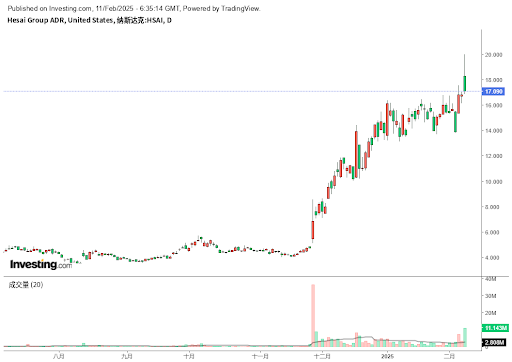
AI与软件:短期核心受益者智能化是人形机器人的核心,而大模型、计算机视觉和自然语言处理等AI技术将在其中发挥关键作用。其中,AI算力是机器人智能化的基础,因此,算力提供商(如英伟达)和大模型公司(如微软、百度)将成为短期内最直接的受益者。市场关注的焦点在于英伟达预计于2月26日公布的财报,AI芯片的订单量可能刺激短期涨势,为投资者提供短线交易机会。相关公司:
- AI芯片:英伟达(美股)、寒武纪(A股)
- 大模型:OpenAI(微软投资)、百度(A股/HK)、谷歌DeepMind
- 机器人操作系统:华为(HMS+昇思MindSpore)、达闼科技(HK)

整机制造:长线投资布局目前,人形机器人仍处于产业发展的早期阶段,整机端仍处于前期研发+试点阶段,具备量产能力的公司数量有限。但如果小米的CyberOne机器人有新进展,短线可能爆发;此外,如果特斯拉的Optimus能如马斯克所说将成本降至2万美元,C端市场(家政、陪护)将有爆发潜力。此外,优必选的IPO概念和人形机器人主题,也容易受到市场资金的追捧。相关公司:
- 海外:特斯拉(美股)、Boston Dynamics(软银/现代)
- 国内:小米(A股/HK)、优必选(HK)、傅利叶智能(未上市)
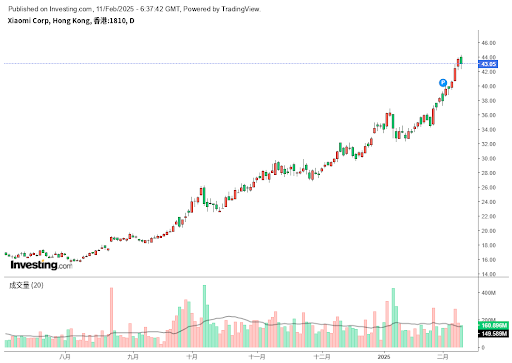
投资策略:短期、中期与长期展望
- 短期:首选AI算力(如英伟达)及核心零部件供应商,关注宁德时代财报带来的交易机会。
- 中期:关注人形机器人制造商,特别是从工业机器人转型到人形机器人的公司,如汇川技术、埃斯顿。
- 长期:关注机器人在家政、医疗、安防等服务行业的应用,以及生态软件与AI交互技术的发展。
总结来说,2025年或将成为人形机器人产业的拐点,而AI、核心零部件和制造商的投资逻辑正在逐步清晰。短期内,AI算力和核心零部件供应商受益最大,中期则关注整机制造商的进展,长期则需观察机器人能否在C端市场形成规模化应用。免责声明:GO Markets 分析师或外部发言人提供的信息基于其独立分析或个人经验。所表达的观点或交易风格仅代表其个人;并不代表 GO Markets 的观点或立场。联系方式:墨尔本 03 8658 0603悉尼 02 9188 0418中国地区(中文) 400 120 8537中国地区(英文) +248 4 671 903作者:Sylvia Qin | GO Markets 悉尼中文部
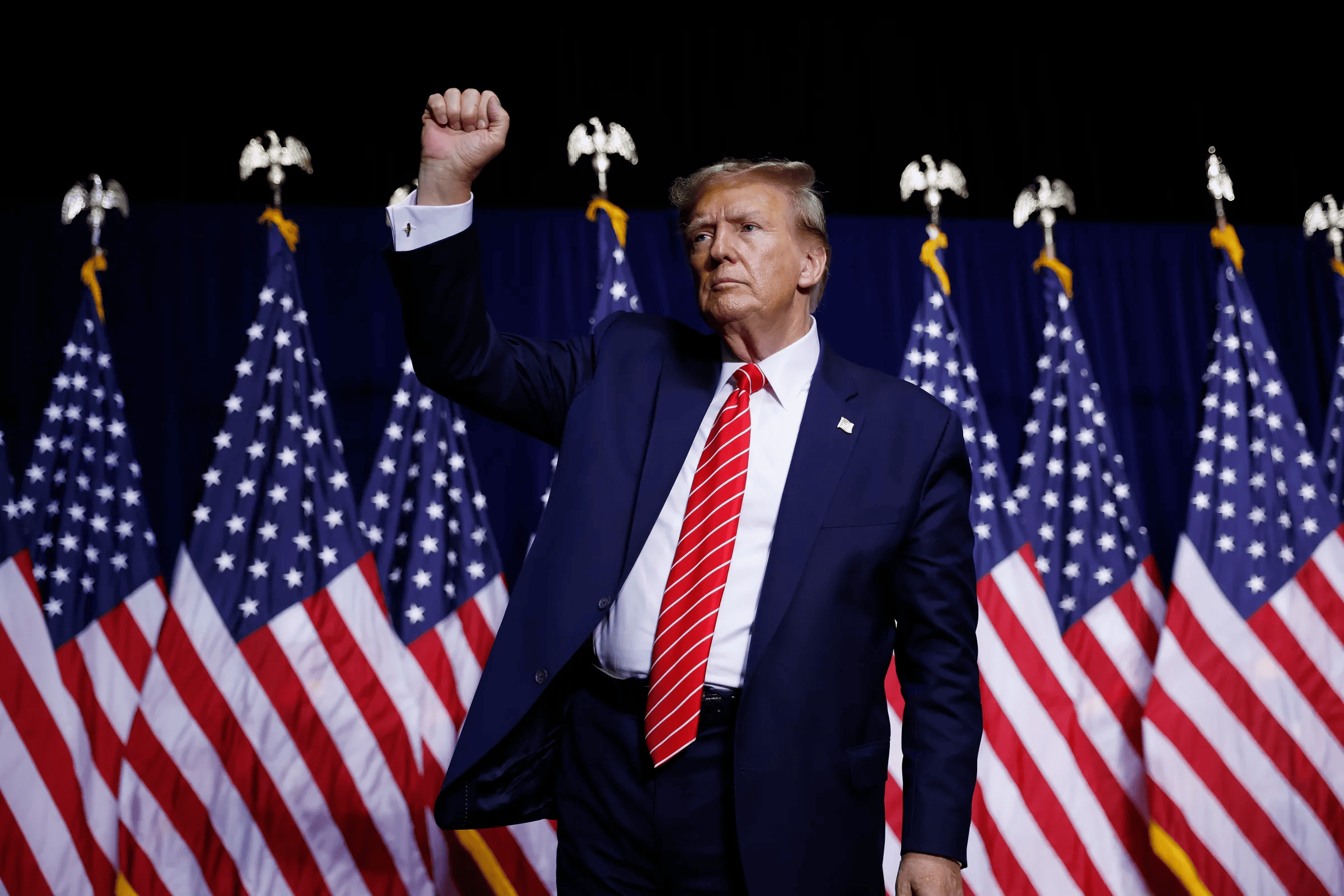

热门话题
随着特朗普重新执掌白宫,在短短1周内他宣布了一系列和之前拜登政府截然相反的政策。从军事,外交,内政,移民以及外贸上全面主动出击,并且频繁使用了一个他颇为擅长的技术方法:极限施压。这个中文词汇最早出现在2019年中美贸易战的官方新闻稿里。当时中方的新闻稿提到了美国使用了极限施压的方法希望迫使中国可以调整到符合美国期望的贸易条款里。所谓极限施压,其实英文叫做maximum pressure。顾名思义,就是在某个领域(通常是外交领域)给予对手最大程度的压力,以测试对方底线,以及达成自己最大的利益。
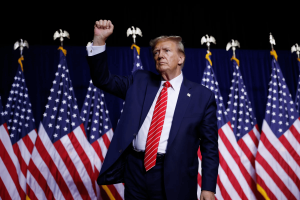
特朗普看似经常大放厥词,说一些不靠谱的话,其实很多时候,这些发言和发在社交媒体的惊人言论都是经过其背后团队精心策划的。例如在之前针对加沙地区的停火协议,以及针对伊朗的核武器等问题上,特朗普使用几乎直接威胁的方式明确警告了对手,而在针对加拿大,墨西哥和中国的关税问题上,特朗普也使用了极限施压的办法:先扔出准备最高加税50%的惊人言论,给与对方极大的心理压力,之后等真正实施的时候,却从10%开始测试对手,如果得不到有效回应,则会继续提高压力阀。其实这种策略,和我们平时我们玩的扎金花或德州游戏很相似。特朗普就类似于一个有着巨大资金背景的玩家,加入他带啦1万现金,那其他玩家可能就只有几百或最多一千现金。而特朗普实施的极限施压,就类似于上手就是500下注,或者直接20倍不看牌蒙一把。500,对他来说只是二十分之一,而对其他对手来说,可能就是全部身家。在这种严重不对等的情况下,对手不但会面临巨大的压力,而且很容易会因为压力巨大的而出现纰漏或错误。而实力雄厚的玩家则可以因此抓住机会而继续进攻。这种策略虽然非常不地道,但是不得不承认,不但在牌桌上有效,在外交领域也同样奏效。
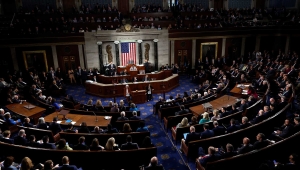
可以预见,在未来很长一段时间里,特朗普都将会充分利用美国的经济,军事优势地位来最大程度给予对手极限施压,以最大程度为美国谋利。今天我们要来说的是更加直接的问题:美国目前的政策下,对中国,对澳洲的影响是什么?其实在回答这个问题之前,我们只需要知道两个信息:美国是中国最大的出口买家客户。美国是澳洲前5大出口买家客户。而中国又是澳洲最大的出口客户。这个三角恋关系是不是有点复杂?如果用一句话来总结的话就是:美国加关税,中国和澳洲都会有损失,而中国经济受到影响,又会对澳洲产生更大影响。在特朗普上任后,美国已经开始了针对中国加拿大等几个国家的商品征收10%的关税,而中国也反击征收美国部分商品10-15%的关税,接着上周末,特朗普又宣布针对所有出口到美国的钢铁和铝征收额外25%的关税,不限出口国,是所有进入美国的钢材和铝。大家要知道,目前全世界钢材出口排名最前面的就是中国,印度和日本。而其中中国的钢材出口量几乎是第二位到第九位的总和。所以,美国的钢材关税,其实最大影响的还是中国。
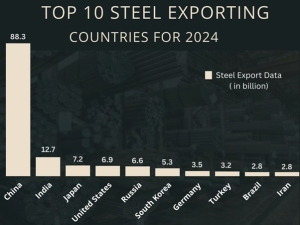
然后,小学数学题来了,既然中国是全世界最大的钢材出口国,那现在如果因为美国加关税而出口少了,会有什么影响?是不是有可能不需要生产这么多?那生产钢铁的原材料是什么?——铁矿石。而谁又是最大的铁矿石供应商?——澳洲所以,虽然澳洲并不是前10大钢材出口国。但是澳洲却是给中国供应最多铁矿石的国家。所以如果中国的钢材产量因此而减少,那对于澳洲铁矿石的需求量自然也会相应下降。

而澳元在国际市场被称为(大宗)商品货币,也意味着,如果澳洲的铁矿石价格和出口量受到影响,不但会直接影响澳洲的经济,也会同样使得澳元长期承受巨大压力。那有没有转机呢?当然有。但是主动权从来就不在澳洲,而在中美手里。如果在2025年,中美之间可以暂时再次达成某种协议,即使不是长期的,也会在短期内帮助澳元反弹。但是如果中美无法达成协议,而两个各自不断增加针对对方的关税,那就意味着中国的损失会更大,而一旦外界对中国未来经济前景发生负面看法,那将会更加刺激原本已经在重压之下的澳元。但是大家不用太过于沮丧。毕竟中国经济体量极大,即使开始放缓,也会依然以惯性向前滑行很长一段时间。因此即便钢铁出口量真的下降了,为了保证就业和GDP,中国也会出台其他政策来维持最起码的经济增长。因此虽然澳洲不可能再出口以前这么多的铁矿石了,但是如果以总量来计算,依然会远超10年之前。我的观点还是那句话:中美大和解,则澳洲经济和澳元大赢,中美短暂和解,则澳洲经济和澳元短期反弹,中美继续吵架加关税,那澳洲经济可能还可以靠增加移民多撑几年,但是澳元则肯定会继续一路向南。免责声明:GO Markets 分析师或外部发言人提供的信息基于其独立分析或个人经验。所表达的观点或交易风格仅代表其个人;并不代表 GO Markets 的观点或立场。联系方式:墨尔本 03 8658 0603悉尼 02 9188 0418中国地区(中文) 400 120 8537中国地区(英文) +248 4 671 903作者:Mike Huang | GO Markets 销售总监

